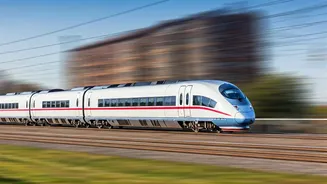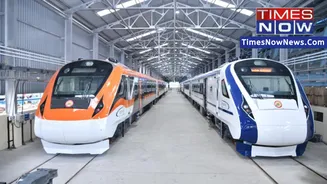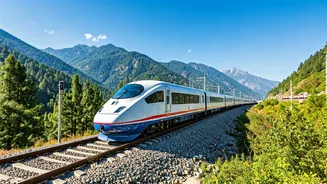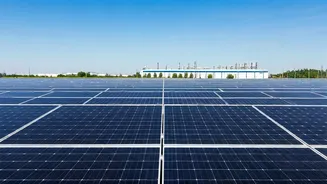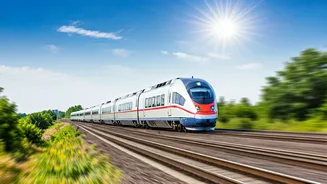Faster Than Ever
The advent of high-speed rail marks a significant leap in transportation technology. This system will enable trains to traverse distances of 1,000 kilometers
in a mere four hours. This speed represents a huge shift from conventional rail systems and provides opportunities for streamlined movement across vast geographical areas. It makes cross-border travel quicker and easier, potentially boosting business, tourism, and overall connectivity between various regions. By reducing travel times dramatically, high-speed rail has the potential to fundamentally transform the way people and goods are transported, contributing to enhanced accessibility and economic integration on a global scale.
Connecting Multiple Countries
One of the most exciting aspects of this high-speed rail network is its potential to link multiple countries. This connectivity can transcend geographical limitations and facilitate ease of travel. Seamless integration of transport networks across national boundaries would also create more economic advantages, enabling efficient movement of goods and people. This will enhance trade, tourism, and overall cooperation among the connected nations. Furthermore, the establishment of such a network fosters a sense of unity and shared progress, promoting diplomatic ties and collaboration in diverse sectors. The collaborative effort in building and maintaining this network exemplifies a collective vision for a more interconnected and prosperous future, benefiting all participating countries.
Technological Advancements
The remarkable speeds achieved by high-speed rail are a direct result of several cutting-edge technological innovations. These trains are designed with advanced aerodynamics to reduce air resistance. The construction of dedicated tracks, minimizing curves and gradients, is also very important for maintaining high speeds. Sophisticated signaling systems guarantee safety and enable trains to travel at higher speeds, with improved reliability and performance. Electrical propulsion systems provide efficient power delivery, and lightweight materials help to reduce the overall weight of the train, resulting in better acceleration and energy efficiency. These technological leaps are instrumental in creating a transportation system that is both swift and efficient, redefining modern travel.
Economic and Social Impacts
High-speed rail projects have far-reaching effects on economies and societies. These networks can stimulate regional economic growth by improving accessibility to markets and opportunities. Reduced travel times and increased convenience often boost tourism and business travel, generating income and employment for the local communities. The improved transport system often results in reduced carbon emissions and congestion on roads, benefiting the environment and public health. This enhanced connectivity can also promote social inclusion, making it easier for people to access education, healthcare, and other services. The overall impact creates a more vibrant, dynamic, and interconnected society, improving the quality of life for residents and fostering a more sustainable future.
Looking Ahead: Future Prospects
The future of high-speed rail appears bright, with numerous projects planned and already under construction around the world. As technology continues to develop, expect even faster trains and further improvements in efficiency and sustainability. More countries are investing in this crucial infrastructure, recognizing its potential to transform their transportation networks and economies. This will create greater cross-border connectivity, which encourages economic integration and collaboration. This also ensures that high-speed rail will play a significant role in defining the future of global mobility. Innovations are continuously driving the future of high-speed rail, making it a critical aspect of international cooperation.
